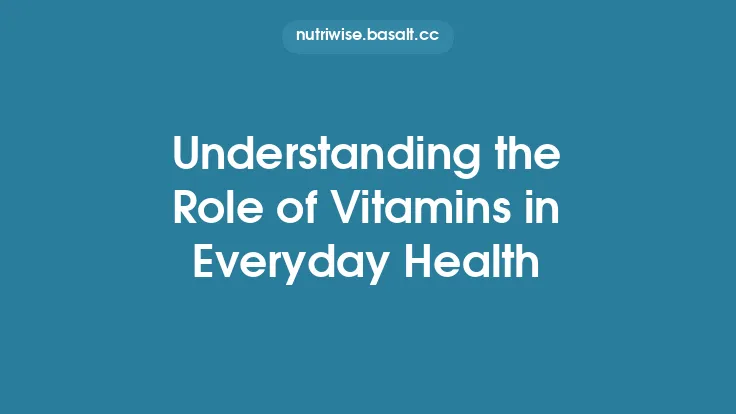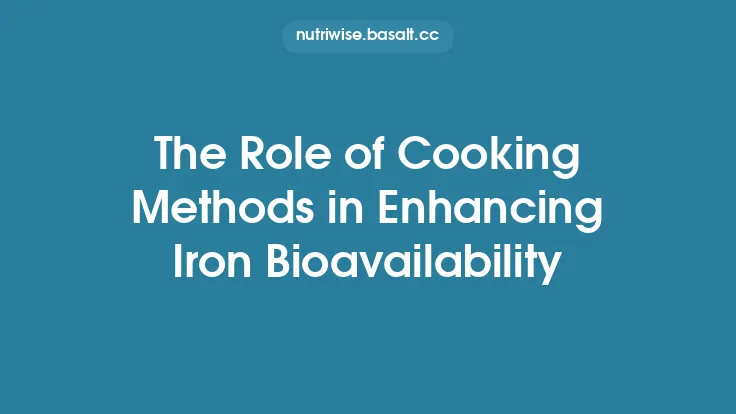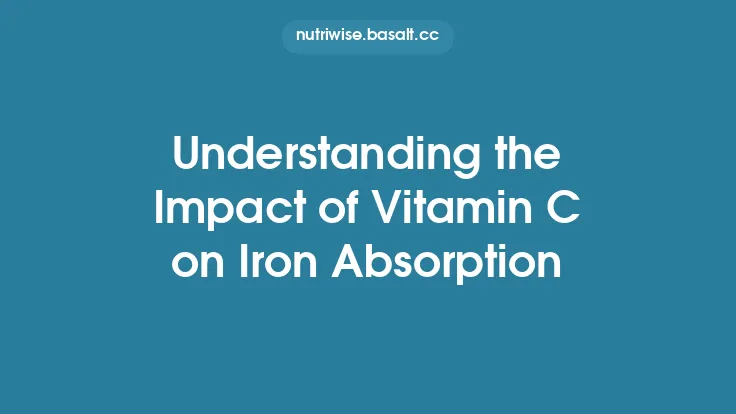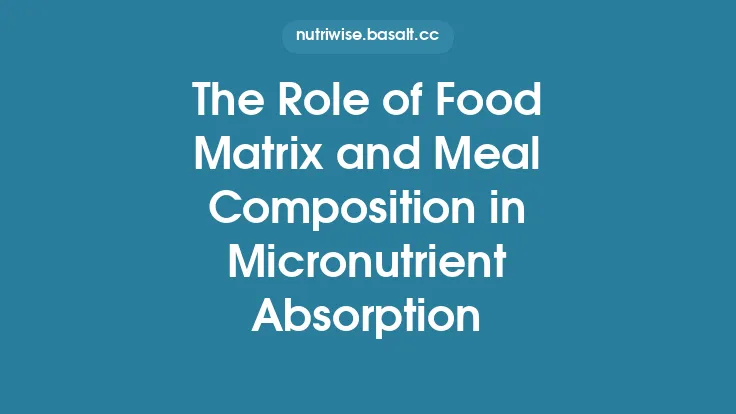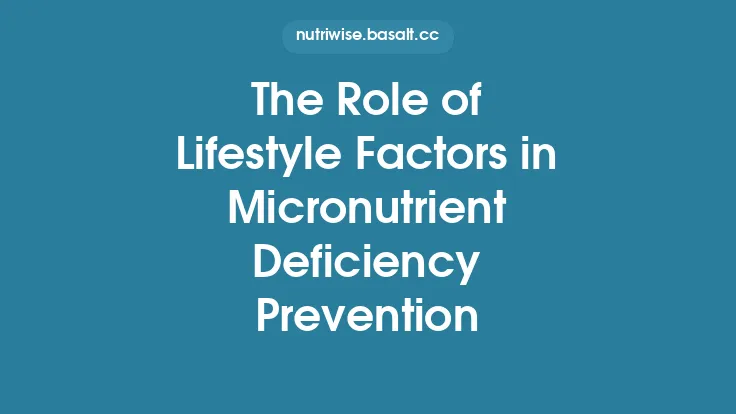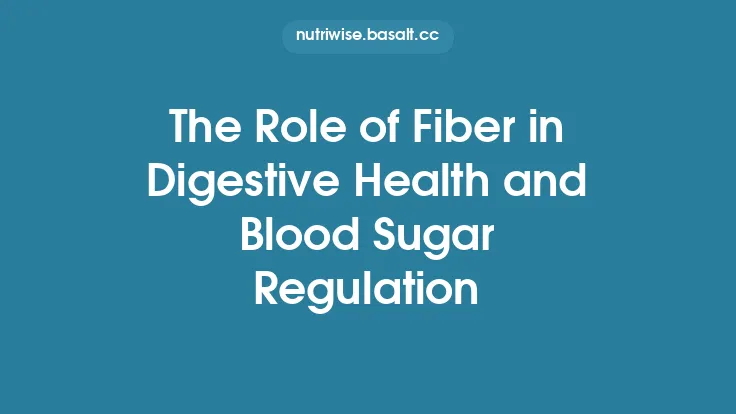In everyday nutrition, iron exists in two chemically distinct forms—heme and non‑heme—and each plays a unique role in maintaining the body’s iron pool, supporting red‑blood‑cell production, and preventing iron‑deficiency anemia. Understanding how these two forms differ, how the body handles them, and how they fit into a balanced diet is essential for anyone looking to sustain optimal iron status over the long term.
Biochemical Distinctions Between Heme and Non‑Heme Iron
Molecular structure
- Heme iron is bound within a protoporphyrin IX ring, forming the iron‑porphyrin complex that characterizes hemoglobin, myoglobin, and various cytochromes. This chelated configuration shields the iron atom from the aqueous environment, rendering it chemically stable and less reactive.
- Non‑heme iron refers to iron that is not incorporated into a porphyrin ring. In foods, it appears primarily as ferric (Fe³⁺) or ferrous (Fe²⁺) ions complexed with organic ligands such as phosphates, oxalates, or polyphenols. In the bloodstream, non‑heme iron circulates bound to transferrin.
Solubility and reactivity
- The porphyrin ring of heme iron confers high solubility in the lipid bilayer of cell membranes, facilitating its direct uptake.
- Non‑heme iron’s solubility is pH‑dependent; it is more soluble in the acidic environment of the stomach (Fe³⁺ reduced to Fe²⁺) but can precipitate or form insoluble complexes in the neutral pH of the small intestine.
Physiological carriers
- Heme iron is transported across the apical membrane of enterocytes primarily via the heme carrier protein 1 (HCP1) and subsequently liberated from the porphyrin ring by heme oxygenase.
- Non‑heme iron is taken up through the divalent metal transporter 1 (DMT1) after reduction to the ferrous state. Although these transporters are part of the broader iron‑absorption machinery, the distinction in carrier proteins underscores the intrinsic differences in how the body processes each form.
Relative Bioavailability and Its Nutritional Implications
Absorption efficiency
- Heme iron boasts an absorption rate of roughly 15–35 % of the ingested amount, a figure that remains relatively stable across a wide range of dietary contexts.
- Non‑heme iron is markedly more variable, with an average absorption of 2–20 % depending on the presence of enhancers (e.g., certain amino acids) or inhibitors (e.g., phytates, polyphenols). This variability makes non‑heme iron a less predictable source for meeting physiological needs.
Regulatory feedback
- The body’s iron‑regulatory hormone, hepcidin, modulates both pathways but exerts a stronger suppressive effect on non‑heme iron uptake because the DMT1‑mediated route is more sensitive to hepcidin‑induced internalization of the transporter. Consequently, when iron stores are replete, non‑heme iron absorption can be curtailed more dramatically than heme iron absorption.
Implications for dietary planning
- Because heme iron contributes a disproportionate share of absorbed iron relative to its dietary weight, even modest inclusion of heme‑containing foods can significantly boost total iron uptake. Conversely, reliance solely on non‑heme iron demands careful attention to the overall dietary matrix to avoid suboptimal absorption.
Influence on Iron Homeostasis and Anemia Risk
Maintenance of iron stores
- Heme iron’s high bioavailability makes it a critical contributor to replenishing hepatic ferritin stores, especially during periods of increased demand (e.g., growth spurts, pregnancy).
- Non‑heme iron, while less efficiently absorbed, provides a steady, modifiable source that can be fine‑tuned through dietary composition, allowing for more precise control over iron influx.
Anemia prevention
- In populations where iron‑deficiency anemia is prevalent, the inclusion of heme iron can rapidly elevate hemoglobin concentrations due to its swift incorporation into erythropoiesis.
- However, chronic reliance on heme iron alone may not be sustainable for all individuals, particularly those adhering to dietary patterns that limit animal‑derived foods. In such cases, optimizing non‑heme iron intake—by managing inhibitors and leveraging natural enhancers—becomes essential for long‑term anemia prevention.
Risk of iron overload
- Because heme iron is absorbed more efficiently, excessive consumption of heme‑rich foods can contribute to iron overload in genetically susceptible individuals (e.g., those with hereditary hemochromatosis). Non‑heme iron’s lower absorption ceiling provides a natural buffer, reducing the likelihood of inadvertent excess.
Considerations for Different Dietary Patterns
Omnivorous diets
- An omnivorous pattern typically supplies both heme and non‑heme iron. The key is to balance the two: sufficient heme iron to meet basal needs while using non‑heme sources to fill any remaining gap without exceeding safe limits.
Flexitarian and pescatarian approaches
- Flexitarians who consume fish and shellfish obtain heme iron primarily from seafood, which often contains lower heme concentrations than red meat but still offers a reliable source. Pescatarians can achieve adequate iron status by combining seafood with strategically selected non‑heme foods.
Vegetarian and vegan diets
- These patterns exclude heme iron, making non‑heme iron the sole dietary source. While the bioavailability is lower, the overall intake can be compensated by consuming larger quantities of iron‑rich plant foods and by employing preparation methods that reduce inhibitors (e.g., soaking, sprouting, fermentation).
Special clinical diets
- Therapeutic diets that restrict red meat for cardiovascular or oncologic reasons must account for the reduced heme iron contribution. In such contexts, clinicians often monitor iron biomarkers more closely and may recommend targeted supplementation, but that falls outside the scope of everyday nutrition guidance.
Potential Health Impacts Beyond Anemia
Oxidative stress and cellular signaling
- Heme iron, due to its redox‑active porphyrin, can catalyze the formation of reactive oxygen species (ROS) when present in excess, potentially contributing to oxidative stress in tissues such as the colon.
- Non‑heme iron, when bound to transferrin, is generally less prone to catalyzing free radical formation, but unbound ferrous iron in the gut lumen can still participate in Fenton reactions, influencing the local microbiome.
Gut microbiota interactions
- High levels of luminal non‑heme iron can alter the composition of the intestinal microbiota, favoring the growth of pathogenic species that thrive on iron. Conversely, heme iron is largely absorbed before reaching the distal colon, exerting a smaller direct effect on microbial populations.
Cardiometabolic considerations
- Epidemiological data suggest a modest association between high heme‑iron intake and increased risk of certain cardiometabolic conditions, possibly mediated by iron‑induced lipid peroxidation. Non‑heme iron, when consumed within recommended ranges, does not show the same correlation.
Immune function
- Both forms of iron are essential for the proliferation of immune cells. However, the rapid availability of heme iron can support acute immune responses, whereas non‑heme iron contributes to the sustained maintenance of immune competence.
Practical Strategies for Optimizing Iron Balance in Daily Life
- Diversify protein sources
- Incorporate a mix of animal‑derived (e.g., poultry, fish) and plant‑based proteins to obtain both heme and non‑heme iron without overreliance on any single source.
- Mind the cooking environment
- Use cooking methods that preserve iron integrity (e.g., gentle steaming, sautéing) and avoid excessive high‑heat techniques that can degrade heme proteins.
- Control inhibitor exposure
- While the article does not delve into vitamin C, it is still prudent to be aware that certain compounds (phytates in whole grains, polyphenols in tea/coffee) can bind non‑heme iron. Simple timing adjustments—such as spacing tea consumption away from iron‑rich meals—can mitigate this effect without requiring supplemental strategies.
- Leverage natural enhancers
- Certain amino acids (e.g., cysteine, histidine) present in protein‑rich foods can modestly improve non‑heme iron uptake. Pairing legumes with modest amounts of animal protein can create a synergistic effect.
- Monitor portion sizes of heme‑rich foods
- For individuals concerned about iron overload, limiting portions of red meat to 2–3 servings per week while emphasizing lean poultry and fish can provide adequate heme iron without excessive intake.
- Consider fortified foods judiciously
- When dietary intake falls short, fortified products that contain non‑heme iron can be a useful adjunct, provided they are consumed in moderation to avoid excess.
Monitoring and Adjusting Intake Over Time
- Periodic blood testing: Even in the absence of overt symptoms, checking serum ferritin, transferrin saturation, and hemoglobin every 1–2 years can reveal trends in iron status.
- Dietary logs: Keeping a brief record of meals that contain heme versus non‑heme iron helps identify patterns that may need adjustment.
- Responsive adjustments: If ferritin trends downward, modestly increasing heme‑iron intake or enhancing non‑heme iron bioavailability (through preparation techniques) can be effective. Conversely, rising ferritin in the context of high heme‑iron consumption may warrant a reduction in red‑meat portions.
Key Takeaways
- Heme and non‑heme iron differ fundamentally in structure, absorption efficiency, and regulatory dynamics, making each uniquely valuable in everyday nutrition.
- Heme iron provides a highly bioavailable source that can quickly replenish iron stores but must be consumed mindfully to avoid overload.
- Non‑heme iron, though less efficiently absorbed, offers flexibility and can be optimized through dietary composition and preparation methods.
- Balancing both forms—tailoring intake to individual dietary patterns, health status, and lifestyle—supports robust iron homeostasis and reduces the risk of iron‑deficiency anemia.
- Regular monitoring and modest, evidence‑based adjustments ensure that iron intake remains aligned with the body’s evolving needs throughout the lifespan.
By appreciating the distinct roles of heme and non‑heme iron and applying practical, everyday strategies, individuals can maintain healthy iron levels, support optimal oxygen transport, and promote overall well‑being without relying on extreme dietary restrictions or unnecessary supplementation.
